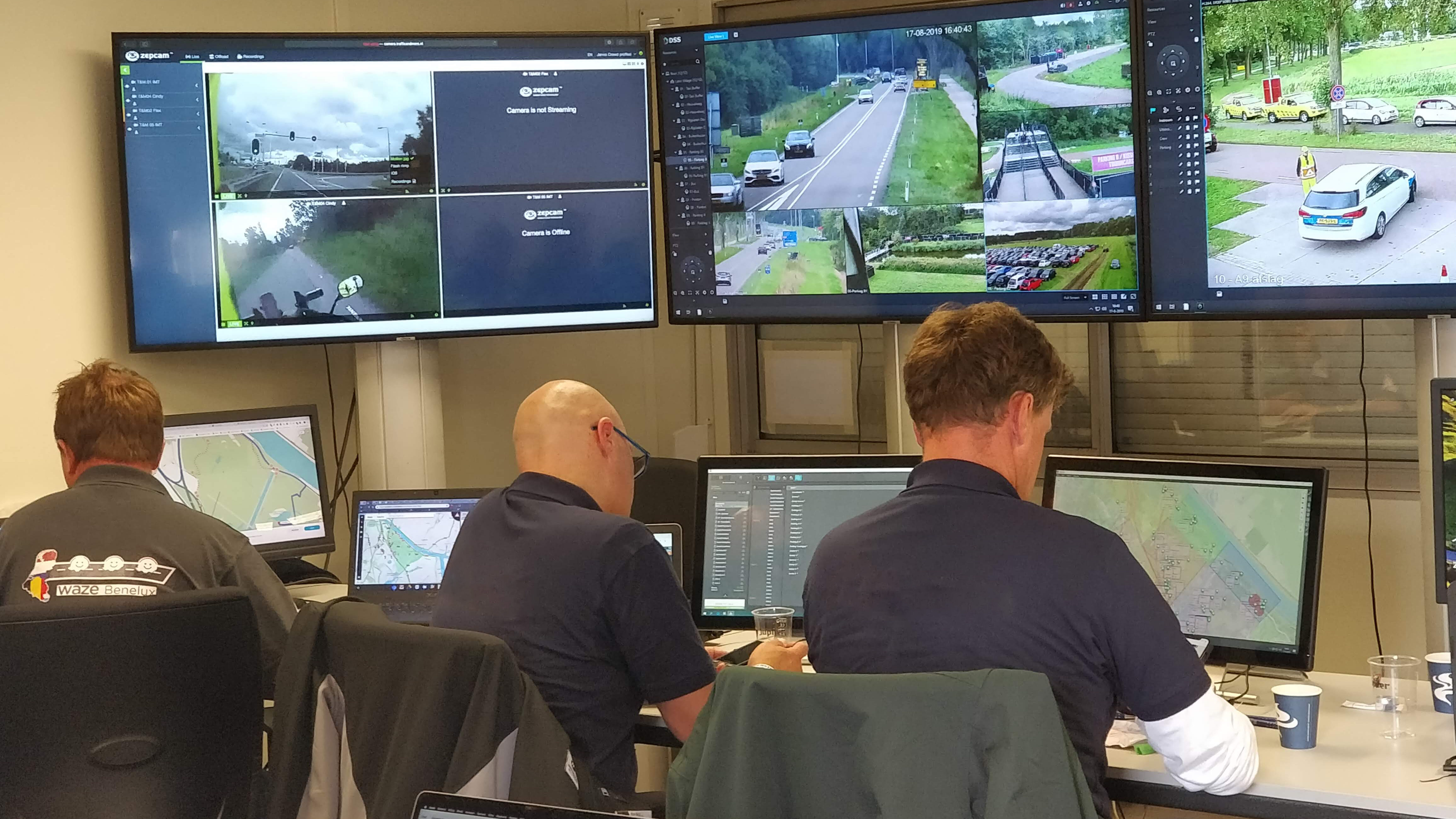
Event Support
If you are organising an event and you want to provide your visitors with optimum information about making their way there, you draw up a mobility plan, organise parking and possibly overflow parking locations, set out pedestrian routes and place signs to direct traffic. But how do you inform your visitors before they arrive at your venue? We offer Event Support for this very reason. It is a collection of services that lets you communicate with your visitors, guide them on their journey and analyse how the traffic is evolving.
Objectives that are met by Event Support:
- Directly and demonstrably reaching different target audiences around the event;
- Being able to directly manage the travel behaviour of these target audiences, for example by providing them with a different route;
- Providing road users with dynamic and up-to-date information on what they will encounter on their journey;
- Collecting data on the use of diversion routes, the mood of the various target audiences and the degree to which they are following advice;
- Getting in touch with the different target audiences and receiving their feedback.
There are three phases in Event Support: Communication, Management and Analysis. Below is a description of what we do in each phase.
1. Communication
To avoid visitors arriving at your event like a tsunami, it is essential that you communicate with them about their journey at an early stage. Not only do you need to explain all the options in text, you also need to interact with the visitors so they can each decide what the optimal journey might be for them. Our Mobility Portal is the tool that provides the required support, giving visitors optimum information while managing their travel behaviour. The Mobility Portal also provides valuable details about the expected modal share among visitors.
If you are not sure how to reach your visitors in advance, for instance because you are organising a free event, then we can help you deploy Online Traffic Management. Besides the Mobility Portal, we can reach target audiences using Waze, Google and platforms such as Facebook and LinkedIn.
2. Management
Have you informed your visitors about their travel options and have they chosen to go by car? If so, we help you make sure they follow the right route to their destination. For example, to one of the car parks or overflow parking locations you have organised. Or perhaps to a P+R to reduce traffic congestion in the vicinity of the event. Meanwhile, you also have to deal with those road users in the area who are not attending the event. You will want to divert that traffic along routes that do not interfere with your visitor traffic.
Our Traffic Reportal combined with our use of the Waze community means we can enter road closures, diversions and preferred routes in almost any navigation system. This lets visitors find their way to your event and helps road users who happen to be in the vicinity of your event navigate smoothly around it. The use of navigation not only supports the signs you have placed but also provides additional ways of ensuring a safe flow of traffic. For example, if your car park has several entrances, then we can direct visitors who are navigating to this destination to one of the entrances in real-time so the traffic is dispersed as it arrives.

Read how we did this at the LatinVillage Festival.
3. Analysis
To properly control the traffic flows around an event, it’s crucial to be able to see things as they stand. Besides camera images and people on location, data from navigation systems and other sources help map the situation. The Event Traffic Dashboard is designed to provide an overview of the traffic flow, the congestion along the roads and notifications about any incidents.
As well as showing the current status, the Event Traffic Dashboard also logs historical data, allowing the performance of inbound and outbound traffic flows to be factored in when reviewing an event. It includes special events and reports provided by Waze users, which means it can serve as the perfect starting point for future events.
